By: Robert Avsec, Executive Fire Officer
Social media tools such as Facebook, Twitter, Instagram, Pintrest and others have become THE way  that people share information and expect to get information before, during, and after a natural or man-made disaster. I truly believe that and I also believe this: any public safety agency that doesn’t understand and fully embrace my previous statement is going to have a “rough row to how” during and after their next “big one.”
that people share information and expect to get information before, during, and after a natural or man-made disaster. I truly believe that and I also believe this: any public safety agency that doesn’t understand and fully embrace my previous statement is going to have a “rough row to how” during and after their next “big one.”
South Carolina appears to have taken the brunt of the severe weather that rained down on the east coast of the USA this past weekend as Hurricane Joaquin “ducked and weaved” menacingly toward the U.S. mainland before heading out to sea.
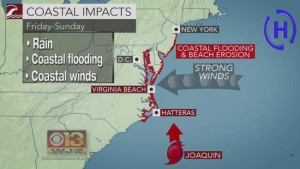 And social media was there. Folks up and down the eastern seaboard began posting images, videos, and text posts before the rains even began in earnest and continued as the torrential rains started coming ashore. While states up and down the eastern seaboard got pounded with heavy rains over several days, images like these from the Palmetto State provide some sense of the impact of this “1,000 Year Storm” (A term being used by many South Carolinians from Governor Nikki Haley on down to local community leaders and residents) on the residents of South Carolina.
And social media was there. Folks up and down the eastern seaboard began posting images, videos, and text posts before the rains even began in earnest and continued as the torrential rains started coming ashore. While states up and down the eastern seaboard got pounded with heavy rains over several days, images like these from the Palmetto State provide some sense of the impact of this “1,000 Year Storm” (A term being used by many South Carolinians from Governor Nikki Haley on down to local community leaders and residents) on the residents of South Carolina.
The impact of Hurricane Sandy when it came ashore in 2012 with devastating effect on New Jersey, New York City, and a good portion of the northeastern USA is being viewed by emergency management folks as one of the major paradigm shifts for social media use in disasters. The emergency management community has begun to be proactive in its use of social networks to capture the collective knowledge of the public to prepare for the coming emergency, direct resources during the emergency, and coordinate and direct resources following the emergency.
Formatting Your Social Media Communications
Subject matter experts in the use of social media estimate that roughly 65 percent of social media 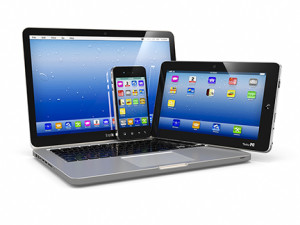 users access their social media accounts using wireless devices, e.g., smartphones and tablets, rather than desktop PCs. Make sure that posts from your website to your social media apps can be viewed properly on those wireless devices. For example, limit your written communications, such as blog posts, to 350 words or less. Ensure that photos and videos that you post have been compressed so that their download time is kept short on wireless devices.
users access their social media accounts using wireless devices, e.g., smartphones and tablets, rather than desktop PCs. Make sure that posts from your website to your social media apps can be viewed properly on those wireless devices. For example, limit your written communications, such as blog posts, to 350 words or less. Ensure that photos and videos that you post have been compressed so that their download time is kept short on wireless devices.
Be ready for the twin “floods”: Inbound and Outbound Information
| What’s hot in SM? | What’s not hot in SM? |
| Organizations and communities that use SM to gather information and resources from the community during a disaster or emergency situation (Inbound & Outbound Communication) | Using SM solely as an additional channel—like radio and TV news and print media—and then only for the distribution of information (Outbound Communication) |
Let’s take a closer look at Inbound and Outbound communication using some guidelines contained in the white paper, Emergency Situation Awareness from Twitter for Crisis Management. In the paper, Mark Cameron and his colleagues submit that a social media strategy for emergency managers should address several key areas including, but not limited to, the following:
- Listen. Have the ability to hear about unexpected or unusual incidents, possibly ahead of official communications;
- Analysis. The ability to condense and summarize inbound messages about an incident, while maintaining awareness of aggregated content without having to read individual messages;
- Prioritize. The ability to classify and review high-value messages during an incident, e.g. messages describing critical infrastructure damage or cries for help;
- See the “big picture”. Understand the impact of an incident on people and infrastructure;
- Adjust to Changing Conditions. Identify, track, and manage issues within an incident as they arise, develop, and conclude; pro-actively identify and manage issues that may last for hours, days or weeks; and
- Review. The ability to perform forensic analysis of incidents by analyzing social media content from before, during, and after an incident.
Examples of How We Can Proactively Use Social Media Before, During, and After
Before the Emergency
What? Use Twitter to create a unique hashtag for use throughout the anticipated storm, e.g., 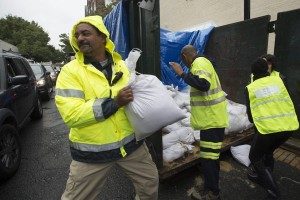 #MyrtleBeachJoaquin2015, and include the hashtag in all of your outgoing Tweets to your community. Encourage your residents to use the hashtag in all of their Tweets about the coming storm before, during, and after the storm. Also, encourage your residents to Tweet videos and photos of the storm’s development and impact on where they live, e.g., conditions of local streams and roadways, fallen trees, downed powerlines, etc.
#MyrtleBeachJoaquin2015, and include the hashtag in all of your outgoing Tweets to your community. Encourage your residents to use the hashtag in all of their Tweets about the coming storm before, during, and after the storm. Also, encourage your residents to Tweet videos and photos of the storm’s development and impact on where they live, e.g., conditions of local streams and roadways, fallen trees, downed powerlines, etc.
Why? By searching on your unique hashtag in Twitter you can collect and analyze the incoming Tweets, and their attached videos and pictures to develop real-time information that you can use in your Emergency Operations Center to formulate, guide and direct your response plans.
What? Take a video of a car being swept away because the operator drove into floodwaters, whether it’s your locality or not, and get it posted on your social media channels with your own warning: Don’t Be This Guy/Gal! Turn Around, Don’t Drown.
Why? A video will have more impact than a text message, even one with an attached photo. Even better? Create a companion video that shows a vehicle operator encountering a flooded section of road who does turn their vehicle around rather than attempting to drive through the water.
What? Use Facebook and Pintrest as your “face” for your storm preparation efforts by posting information about storm preparedness that’s available from sources like Ready.gov and your state’s Emergency Management Agency.
During the Emergency
What? Continue to focus on incoming real-time information from social media to aid in monitoring
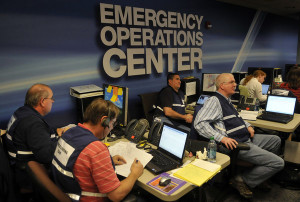
EOC operations in Berlin, CT 11/02/12 during Superstorm Sandy.
the effectiveness of your Incident Action Plan and to make adjustments in the plan and your communications to your citizens.
Why? In the absence of official information we all know from experience that the “rumor mill” will start “cranking out” tons of misinformation. The following excerpt demonstrates how Mayor Michael Bloomberg and the City of New York used social media to “get the bull by the horns”:
Throughout the storm [Superstorm Sandy], NYC Digital, a part of the Mayor’s Office of Media and Entertainment, monitored social media for public reactions to the storm, sending reports to City Hall on a daily basis. Questions asked on Twitter were responded to directly, and the city’s Tumblr account and Facebook page published information from each press conference. The public could sign up to receive text alerts from the Mayor’s Office Twitter account, @nycmayorsoffice, which served as a great alternative digital resource to the city’s website, once people lost power and Internet access.
Use your social media apps to provide your citizens with real-time information regarding evacuation orders, activation and location of emergency shelters, information about the storm’s impact on local infrastructure, community services, etc.
After the Emergency
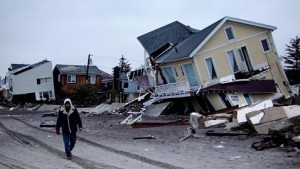 Depending upon the nature of the storm, the recovery phase may take day, weeks, or even months to complete. Continue to use your social media apps—and the relationship with your citizens that you’ve developed before and during the storm—to keep your citizens informed about recovery resources, e.g., drinking water distribution sites, status of roadways, status of local government services, sources of recovery services, etc.
Depending upon the nature of the storm, the recovery phase may take day, weeks, or even months to complete. Continue to use your social media apps—and the relationship with your citizens that you’ve developed before and during the storm—to keep your citizens informed about recovery resources, e.g., drinking water distribution sites, status of roadways, status of local government services, sources of recovery services, etc.
So what does your social media strategy look like for an impending storm?
Related articles
- Social Media Monitoring (mimizhou217.wordpress.com)
- Anaheim CERT to Monitor Social Media During a Disaster (idisaster.wordpress.com)
- Handle Your Next Crisis with Social Media Monitoring (radian6.com)
- Learning the basics of social media monitoring (smartblogs.com)
- Social media monitoring tool video: Why should I monitor social media? (sazbean.com)
 Fire & EMS Leader Pro The job of old firefighters is to teach young firefighters how to become old firefighters!
Fire & EMS Leader Pro The job of old firefighters is to teach young firefighters how to become old firefighters!